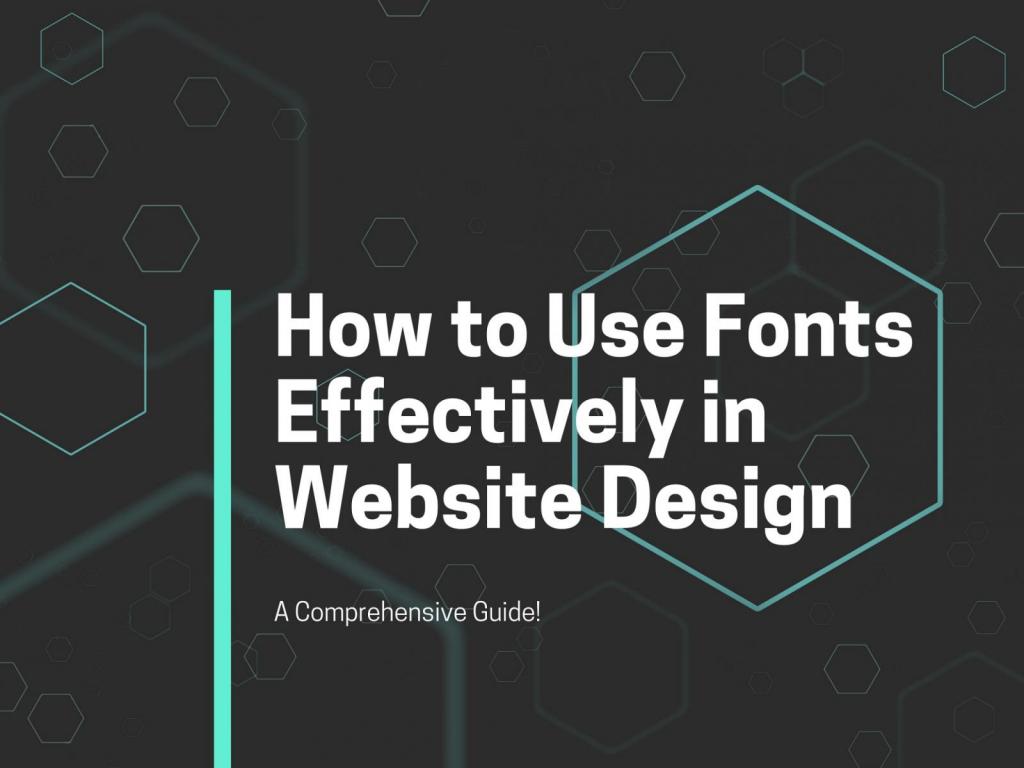Have you ever been visited a website that tried to use fonts in their design and it all went wrong? When it comes to choosing fonts in web design, the main element that you should never ignore is communication. A lot of important information on a website is in the form of written text.
If a user is not able to understand or read that text, it creates a poor user experience, a bad brand interaction, and, ultimately, can cause your website to fail to connect with potential customers. Here are a few tips to use fonts effectively in website design that will help make sure the text is easy to read and help improve the usability of your website:
1. Use a Minimal Number of Fonts and Styles
Web design impacts content marketing, SEO, accessibility, and more; and, fonts are a big part of that. One of the common mistakes people make when using fonts in their website design is using too many or not bothering to determine the minimal number they need. Typography trends can create a cool look, but they’re easy to get wrong. Using more than three fonts often makes your website look odd, and it can have a destructive impact on the user.
However, using less than three fonts or styles is also often not feasible. In this case, people won’t be able to differentiate headings and subheadings. Use three font styles to start and make sure they complement each other. One style for the main heading, one for the subheading, and one for the body.
If you’re not sure, it’s best to stick with common web fonts that are simple and easy to read. The Gotham font family along with any other sans-serif font can make a good combination. Granted, the right choices for you will depend on your branding and other components of your website design.
2. Make Sure Your Fonts Work Across All Device Sizes
The size of fonts plays an essential role in your site’s user experience. Make sure the font you choose looks good and remains easy to read across all devices. People will visit your website from smaller devices. Not all fonts work well on mobile screens. If yours doesn’t, you can bet people will leave and go to another website to find what they need.
You can enhance the readability of the text on your website by testing your chosen fonts and styles on different devices, which is important when you’re trying to meet SEO best practices. If it shows up well on every device, then you know people will be able to read and understand your text no matter what device they are using.
3. Avoid Using ALL CAPS
Sometimes, people will put something in ALL CAPS when they want to emphasize it. It’s fine in logo designs or abbreviations. But, if it’s used too much or in the wrong places, your message can be lost.
It can also negatively affect the reading and scanning speed of your content. This can make your content more time-consuming, annoying, and difficult to read, which means people are more likely to ignore it and leave your website instead.
4. Go for Standard Fonts
Another one of the tips to use fonts effectively in website design is to go for standard fonts. Everyone can get their hands on various stylish and attractive fonts available on Google Fonts free of cost.
But, just because you can get super stylish fonts doesn’t mean you should, at least when it comes to the text on your website. More stylish fonts are appropriate when you are doing branding or creating ads or other visuals. But, even then, they still need to readable whether it’s web design or print design.
When it comes to being able to read content easily on your website, like in a blog post or information about your products or services, it’s better to go with standard fonts that are simple and easy to read. You don’t want your message to get lost. Plus, keeping your text legible is one of the ways to make your website more accessible.
5. Limit the Characters Per Line
If you want to increase the readability of your text, don’t overcrowd the characters per line because it will become hard for people to understand and read your content. If you specify around 60 characters on each line, it can help to enhance the readability of your content.
If you are a web designer, you may be able to break the tules a little bit without negative consequences. But, if you’re not, it’s better to stick to 60 characters per line and 30-40 characters on mobile devices for better readability.
6. Use Spacing Appropriately
Spacing is another complicated issue that increases or decrease the comprehension of your website’s content. In order to maintain your site’s readability, don’t minimize the line spacing as it will become hard for people to read the content.
On the web, white space is your friend. Good line spacing, short paragraphs, and font that is easy to read are essential to your website’s content. It is also said that using the right amount of space between paragraphs and in the margins can increase comprehension of your content by 20%.
7. Be Consistent
Consistency is a crucial element in enhancing the usability of your website. Whatever font selection you have made for the heading, subheadings, and body, stick to it to maintain consistency throughout similar pages on the site.
These are just a few tips to use fonts effectively in website design. Little details can make a big difference in the readability of your website content.

